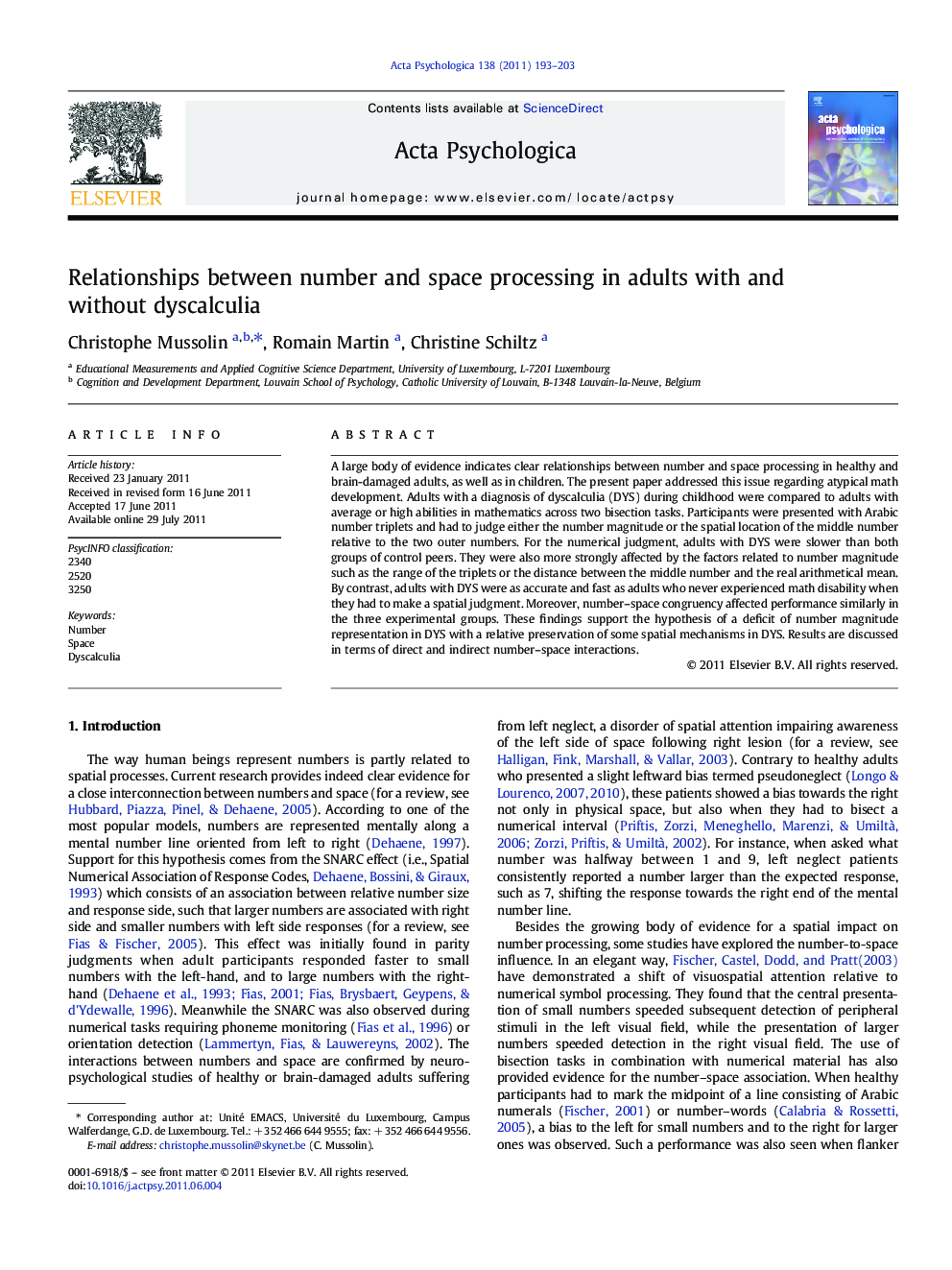| Article ID | Journal | Published Year | Pages | File Type |
|---|---|---|---|---|
| 920188 | Acta Psychologica | 2011 | 11 Pages |
A large body of evidence indicates clear relationships between number and space processing in healthy and brain-damaged adults, as well as in children. The present paper addressed this issue regarding atypical math development. Adults with a diagnosis of dyscalculia (DYS) during childhood were compared to adults with average or high abilities in mathematics across two bisection tasks. Participants were presented with Arabic number triplets and had to judge either the number magnitude or the spatial location of the middle number relative to the two outer numbers. For the numerical judgment, adults with DYS were slower than both groups of control peers. They were also more strongly affected by the factors related to number magnitude such as the range of the triplets or the distance between the middle number and the real arithmetical mean. By contrast, adults with DYS were as accurate and fast as adults who never experienced math disability when they had to make a spatial judgment. Moreover, number–space congruency affected performance similarly in the three experimental groups. These findings support the hypothesis of a deficit of number magnitude representation in DYS with a relative preservation of some spatial mechanisms in DYS. Results are discussed in terms of direct and indirect number–space interactions.
► We find number-space interactions using a numerical landmark task. ► Adults with dyscalculia are impaired when making numerical judgment. ► Adults with dyscalculia perform as controls when making spatial judgment.
